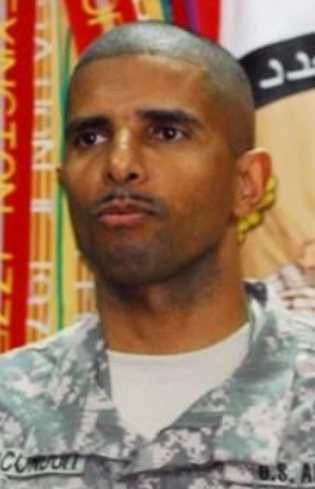 |
Brigadier General
Owen Monconduit
Owen Monconduit is a retired brigadier general in the United States Army, who in 2009 became the first African American to be promoted to the rank of general in the Louisiana National Guard. Monconduit, a native of Pineville, Louisiana, joined the National Guard in 1980 as part of the Reserve Officer Training Corps (ROTC) at Louisiana State University. He was commissioned as a second lieutenant on May 20, 1983, and received a bachelor’s degree in engineering technology the following year. Monconduit served with the 769th Engineer Battalion in Gonzales, Louisiana, and ultimately become the commander of a company. He served in that capacity until 1991 when he took a position with regional command…
Having attained the rank of major, he joined the 529th Engineer Battalion in Monroe, Louisiana. Monconduit was promoted to lieutenant colonel in 2000 and named commander in 2001. In March of 2004, Monconduit’s battalion was assigned to Afghanistan and completed a year-long combat tour during the War on Terror. Upon his return to the United States, Monconduit was assigned to assist in the aftermath of Hurricane Katrina.
Monconduit was promoted to colonel in 2006 and was the executive officer of Adjutant General Bennett C. Landreneau. In 2007, he became commander of the 225th Engineer Battalion, stationed at Camp Beauregard, a few miles outside his hometown of Pineville. In 2008, Monconduit went on a second combat tour, this time in Iraq during the Iraq War. On January 28, 2009, Monconduit was promoted to brigadier general and was officially decorated while serving in Baghdad, Iraq on February 17. Monconduit retired shortly after returning from Iraq in 2010, ending a military career of more than thirty years and over a dozen decorations. For more information, visit blackpast.org.
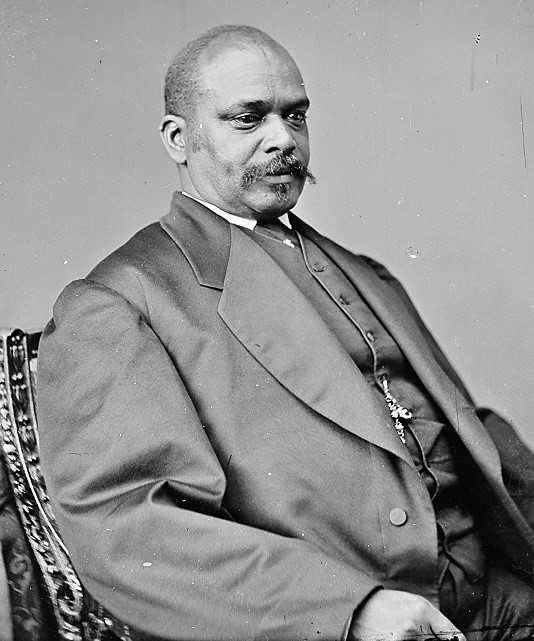 |
Oscar Dunn
Louisiana Lieutenant Governor Oscar James Dunn served as the first Black lieutenant governor in the United States in 1868 and mysteriously died four years later. Dunn was born into slavery in New Orleans in 1826. His father, James Dunn, had been emancipated in 1819 and later purchased the freedom of his wife, Maria, and their two children, Oscar and Jane, in 1832. Working with new freedmen gave Oscar Dunn an opportunity to be an advocate for the education for all African-American children and equal protection laws under the 14th Amendment.
In 1863, Dunn became a member of the Louisiana Republican Party and was elected to its central committee along with two other Black men—the first ever to do so. The enactment of Reconstruction Acts called for the registration of Blacks voters. At mass meetings in New Orleans, Dunn emerged as one of a handful of powerful radical voices demanding Black legal equality and suffrage in Louisiana’s new state government. In 1868, Dunn became one of only seven Black men in Louisiana’s Senate, and the only former enslaved person elected to that body. During the Civil War, Dunn fought in the Union Army for the First Louisiana Native Guard, rising from Private to Captain. The Native Guards were one of the first all-black regiments to fight for the Union.
On Jan. 4, 1868, the state Republican Party met to nominate candidates for the April statewide elections. Dunn accepted the nomination to run for lieutenant governor on a ticket led by gubernatorial candidate, Henry Warmoth. Warmoth and Dunn won as a result of the newly enfranchised black voting bloc. Dunn later led a radical faction of Lincoln Republicans who attempted to have Warmoth impeached for corruption. For more information visit
https://theneworleanstribune.com/2017/05/25/a-brief-history-of-oscar-james-dunn-first-black-lieutenant-governor-in-the-nation/
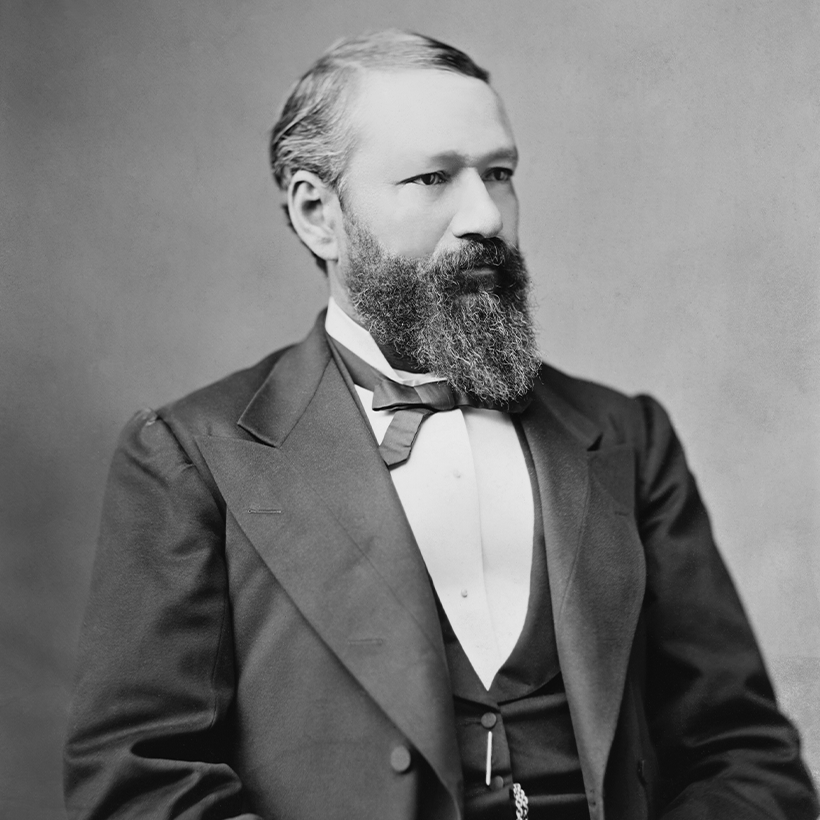 |
Governor
Pinckney Benton Steward
“P. B. S.” Pinchback
Gov. Pinckney Benton Stewart “P. B. S.” Pinchback served as the 24th governor of Louisiana and was the first African American governor in the United States during the Reconstruction Era.
He was born free person of color in 1837 in Macon, Georgia, to William Pinchback, a white plantation owner and Eliza Stewart, his formerly enslaved mother. During the beginning of the American Civil War, Pinchback traveled to New Orleans and raised several companies in the First Louisiana Native Guard and became one of a few African-American commissioned officers in the Union Army. Following his military career, he joined the Republican Party, which originally opposed the expansion of slavery, and was elected to the Louisiana Senate where he served as president pro-tempore. Upon the death of Louisiana’s first African-American Lieutenant Governor Oscar Dunn, Pinchback became acting lieutenant governor.
When Gov. Henry C. Warmoth was impeached, Pinchback took the oath to become the 24th Governor of Louisiana, He served for just 36 days, from Dec. 9, 1872- Jan. 13, 1873. Within that brief time, Gov. Pinchback made several appointments and signed 10 legislative bills. After leaving office, he ran as an at-large candidate for a United States Senate seat. In 1875 he was elected, but the results were contested for years, and he was never seated. As a delegate to the 1879 Louisiana Constitutional Convention, he and two other African-American delegates worked to establish Southern University in New Orleans, which was chartered in 1880. The college relocated to Baton Rouge in 1914.
At age 50, Pinchback studied law and was part of the first graduating class of Straight University, now known as Dillard University in New Orleans. He practiced law in Washington, D.C. Gov. Pinchback died on December 21, 1921.He is buried in a family tomb in the Metairie Cemetery. There is a bronze sculpture of Gov. Pinchback in the rotunda of the Louisiana State Capitol.
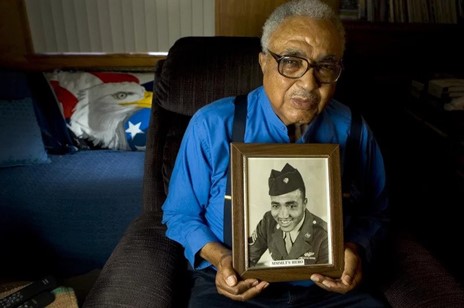 |
Chief Master Sgt. of the Air Force
George W. Porter
Photo credit:
Paul Kitagaki Jr. /MCT/Landov
Chief Master Sgt. of the Air Force George W. Porter was born and raised in Slidell, Louisiana. Porter entered the military in October 1942 and was selected to be a Tuskegee Airman, the first all-Black United States military pilot group. Porter attended the Airplane and Engine Mechanics School at Lincoln Field in Nebraska and subsequently retired to Tuskegee Air Field as a crew chief, squadron inspector, and flight engineer for the 477th Bombardment Group in 1945. Porter spent 23 years in the Air Force. In 2007, President George W. Bush presented the Congressional Gold Medal to Porter and other members of the original Tuskegee Airmen. Porter has been quoted saying that the story of the Tuskegee Airmen “should be in all history books.” For more information about Chief Master Sgt. of the Air Force George W. Porter and his accomplishments, visit
https://sacobserver.com/2013/02/tuskegee-airman-community-leader-george-w-porter-passes/.
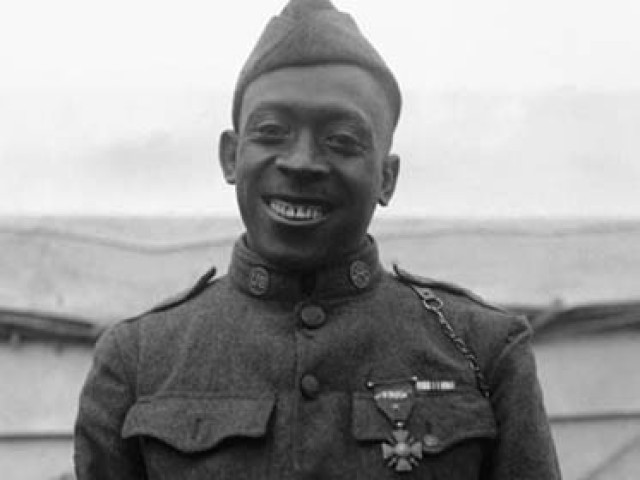 |
New York National Guard Sgt.
Henry Johnson
Fort Polk in Louisiana has been renamed for New York National Guard Sgt. Henry Johnson, a World War I hero. He was working as a porter at Albany’s Union Station when he enlisted in the New York National Guard’s segregated 15th New York (Colored) Infantry Regiment on June 5, 1917, two months after the United States entered World War I. Johnson became a national hero after he fought off a German raiding party with a knife and saved fellow Soldier Needham Roberts from capture on the night of May 15, 1918.
Johnson was awarded the French Croix De Guerre for his actions and was the first American recognized by the French military. But Johnson received no U.S. military recognition until after his death in 1929. He was awarded the Purple Heart in 1996 and the Distinguished Service Cross in 2002. In 2015, he was awarded the Medal of Honor, accepted by New York Army National Guard Command Sgt. Maj. Louis Wilson on his behalf. For more information, please visit
https://www.army.mil/medalofhonor/johnson/
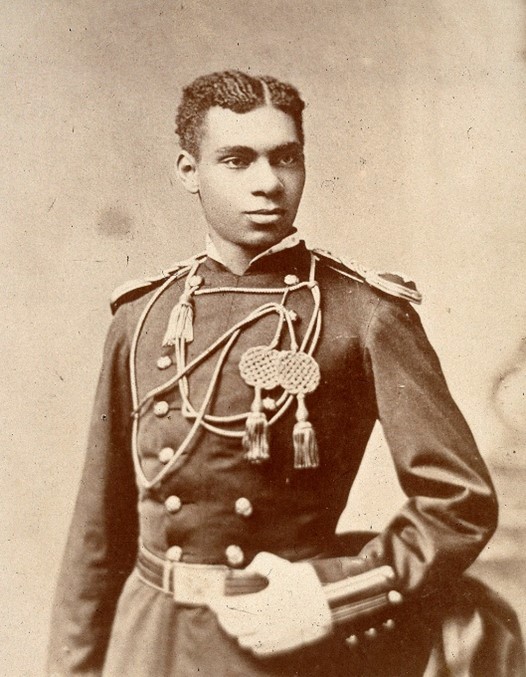 |
Henry Flipper
Born near Thomasville, Georgia on March 21, 1856, Henry O. Flipper rose to prominence as the first African American graduate of the United States Military Academy at West Point in 1877. Despite being born into slavery to Festus, a shoemaker, and Isabella Flipper, Henry was reared in a family that emphasized excellence, and he and his younger brothers all became respected members of their communities as a military officer, AME bishop (Joseph), physician (E.H.), college professor (Carl), and farmer (Festus, Jr.).
Commissioned a 2nd Lieutenant in the U.S. Army upon completing West Point, Flipper was transferred to the l0th U.S. Cavalry Regiment where he became the highest ranking and most famous of the Buffalo Soldiers (African Americans in all-black regiments) stationed at Western military installations. For more information, visit blackpast.org.
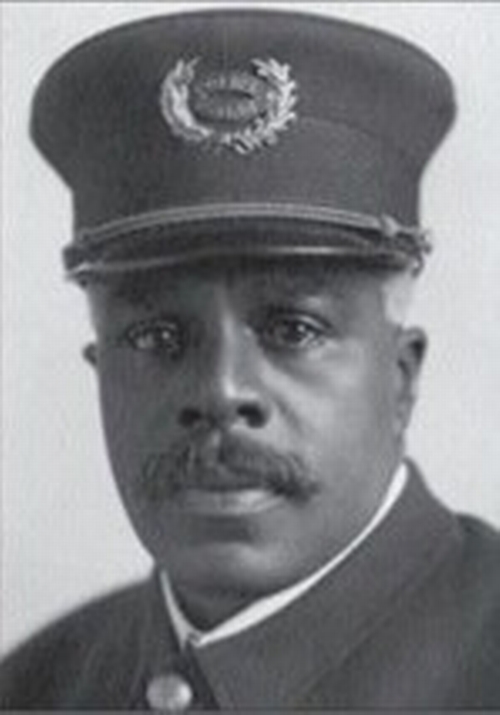 |
Walter Lawson
Walter Lawson was a Buffalo Soldier, a private with the 25th Infantry Regiment of the US Calvary. Lawson was born in Clark County, Virginia in January 1862, to Thomas and Susan Lawson. Not much is known about Lawson’s life before his public service. He served in the 25th Infantry from 1886 to 1891 during the American-Indian Wars. Lawson’s unit traveled from Montana to Minnesota and into the Dakotas. His regiment was involved in the Wounded Knee Massacre in South Dakota that ended with the Ghost Dance War in 1890, after which he was discharged. For more information, visit blackpast.org.
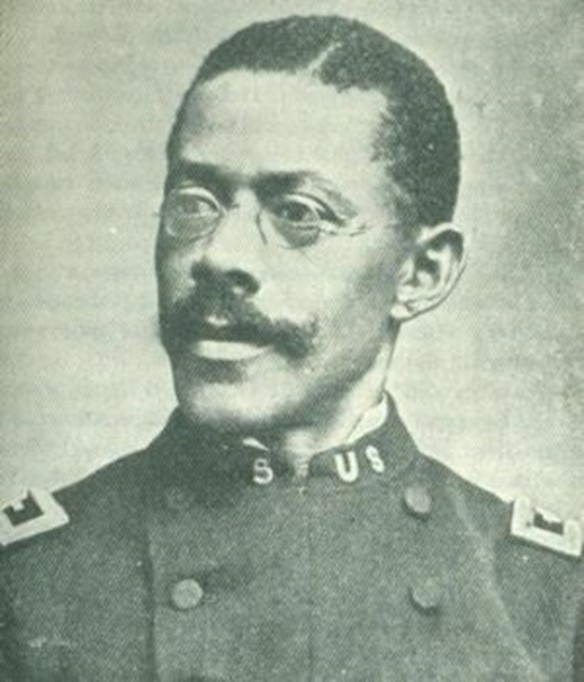 |
George Prioleau
George Prioleau was chaplain of the 9th Cavalry of Buffalo Soldiers in the late 19th century. After witnessing the inequality and mistreatment of his men, he publicly challenged the hypocrisy and racial line being drawn against black soldiers.
Born in 1856 to slave parents in Charleston, South Carolina, Prioleau earned his theology degree from Wilberforce University in Ohio. He was a teacher and served as an A. M. E. pastor and denominational leader for Ohio congregations, and in 1889 he became professor of theology and homiletics at Wilberforce. Six years later, President Grover Cleveland appointed him to replace Henry Plummer as chaplain of the 9th Cavalry, U. S. Army, with a rank of captain. For more information, visit blackpast.org.
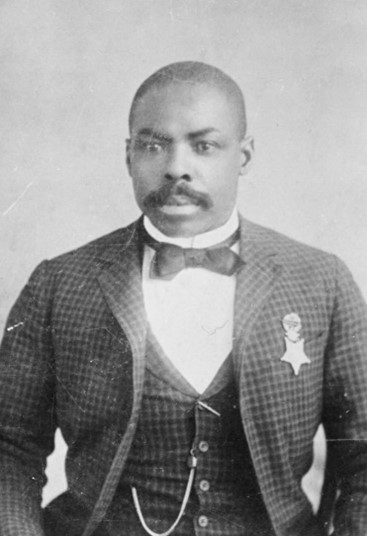 |
Isaiah Mays
Isaiah Mays, a Buffalo Soldier awarded the Medal of Honor in 1890 for his actions during the Wham Paymaster Robbery, was born as a slave in Carters Bridge, Virginia, on February 16, 1858. Very little is known about his life other than his military service.
Although born into slavery, Mays became free after the American Civil War. Sometime later, he moved from Virginia to Ohio. There he enlisted as a private of Company B, 24th United States Infantry at Columbus Barracks in 1886 and rose to the rank of corporal. He was then assigned to duty in the Arizona Territory.
In May of 1889, Corporal Mays, Sergeant Benjamin Brown, seven other infantrymen, and two cavalrymen of the Tenth Cavalry were ordered to escort the military payroll, carried by Major Joseph W. Wham, to pay the soldiers of Forts Bowie, Grant, Thomas, and Apache. After paying the soldiers of Fort Grant on the morning of Saturday, May 11, the payroll wagons began the journey to Fort Thomas... On February 19, 1890, Mays was awarded the Medal of Honor for “Gallantry in the fight between Paymaster Wham’s escort and robbers.” Mays continued to serve in the army until 1893. He resigned and spent the rest of his days as a laborer in Arizona. For more information, visit blackpast.org.
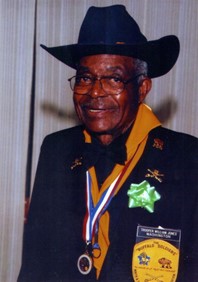 |
William Jones
William Jones, one of the last Buffalo Soldiers, was also a U.S. Army Master Sergeant, Prisoner of War (POW) in Korea and successful entrepreneur. Jones was born in Tamo, Arkansas to farmers Joseph and Elizabeth Jones on July 15, 1918, the youngest of seven children.
Jones grew up in Kansas and attended the “colored school” in Coffeyville, Kansas. On March 5, 1941, at the age of 22, he enlisted in the U.S. Army at Fort Leavenworth, Kansas. He was assigned to the 10th Calvary in Fort Riley, Kansas becoming part of the last generation of buffalo soldiers.
In the 19th Century Buffalo Soldiers served on the western frontier but between 1898 and 1905 they fought in Cuba, the Philippines, and China. When the U.S. entered World War II in December, 1941, the 10th Cavalry was deployed to Camp Lockett, California where they patrolled the Mexican border and provided security for the railroads and bridges on the west coast. For more information, visit blackpast.org.
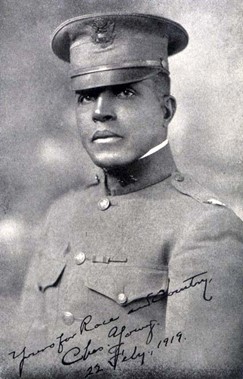 |
Colonel Charles Young
Colonel Charles Young enjoyed a decorated military career after his graduation from West Point Military Academy in 1889. A Buffalo Soldier serving with the 9th and 10th Cavalry and the 25th Infantry, Young eventually became the first African American to achieve the rank of colonel in the United States Army.
Charles Young was born to ex-slaves in Mays Lick, Kentucky in 1864. His father, Gabriel, served in the Union Army during the Civil War. At the age of twenty, Charles Young was appointed to the United States Military Academy at West Point. In 1889 he became the third African American to graduate from the Academy. For more information, visit blackpast.org.